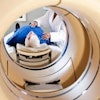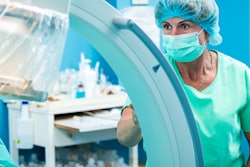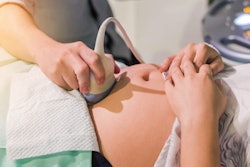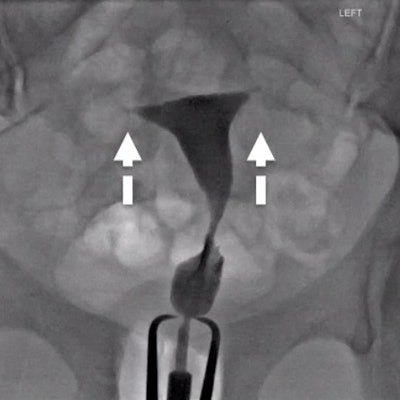
Selective salpingography can help women struggling with infertility conceive naturally, according to researchers at a June 7 news conference ahead of the Society of Interventional Radiology (SIR) 2021 annual meeting.
Dr. Lindsay Machan of the University of British Columbia (UBC) in Vancouver presented evidence that selective salpingography can reveal whether women may benefit from a fallopian tube flush after being mistakenly told that one or both of their tubes were blocked.
"This approach should be considered prior to more invasive and costly infertility procedures in women whom [a hysterosalpingogram] showed occlusion of either fallopian tubes," Machan said.
Estimates suggest that up to 26% of women in North America experience infertility, with fallopian tube disease being the most common cause.
Standard procedures for assessing whether fallopian tubes are open include hysterosalpingograms (HSG), but these x-ray fluoroscopy exams are unable to visualize obstructions from spasms or other common treatable entities, such as mucous plugs, since the contrast material is injected into the uterus.
Selective salpingography also relies on x-ray fluoroscopy. But in these procedures, the catheter and contrast material are directed into the opening of the fallopian tube, which provides a much more accurate assessment of the nature of the suspected blockage.
In the clinical trial being presented at SIR 2022, Machan and colleagues culled imaging data on 956 women who underwent HSG exams after sedation between 2015 and 2021 at UBC's hospital. In women who showed incomplete filling of one or both tubes on initial HSG exams, the researchers then performed selective salpingography, followed by a fallopian tube flush, if appropriate.
According to the results, selective salpingography showed that nearly one in four (23.8%) women had been mistakenly told they had one or both blocked fallopian tubes. Of those with a blockage, over half (56.7%) were subsequently unblocked using a fine wire inserted through the end of the catheter to recanalize the tube.
In total, 80.5% of women in the study who had previously been told they had tubal blockages left the same day with both fallopian tubes open, Machan said. In addition, 15.9% of women received a more precise diagnosis of significant tubal disease.
Machan provided images from one patient, a 40-year-old woman who had been struggling with infertility for two years.
"She became pregnant one month after this 20-minute procedure," Machan said.
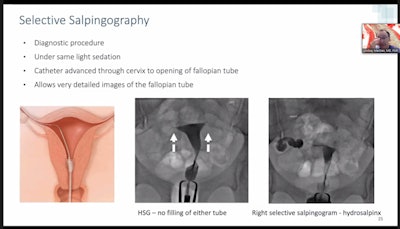
To date, this is the largest dataset compiled on this approach, Machan added. The primary barrier to implementing it more broadly is that few insurers are offering coverage, he said.
"I think key to development is making your infertility clinics aware that this is something that's available to them, and answering their questions and needs that they raise," he told AuntMinnie.com.
"Infertility is also an emotional, often heart-breaking journey, so having this diagnostic procedure and treatment available could be life-changing," he concluded.
In other findings discussed at the press conference, Dr. Douglas Beall, chief of radiology services at Clinical Radiology of Oklahoma, presented a feasibility study of a new hydrogel for the treatment of lumbar disc disease.
Beall said the study demonstrated that the experimental formulation of hydrogel proved safe and effective for relieving chronic low back pain caused by degenerative disc disease when injected into spinal discs.
In a third study, Dr. John Prologo, an interventional radiologist at Emory University School of Medicine, presented results from the first eight humans successfully treated with CT-guided cryoneurolysis for the management of neuropathic pain caused by trauma.
The SIR annual meeting kicks off on Saturday, June 11 in Boston.

